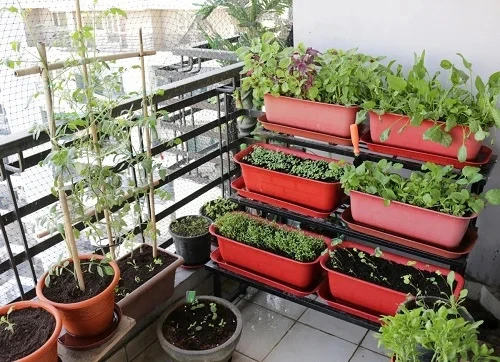I like the idea of a wicker basket coffin with natural-fiber clothes....and an added sword just to confuse future archaeologists •ˋᴗˊ•
Blair
I could be wrong, but I don’t think you can grow all plants in hydroponics. For example, anything that grows on trees(large root systems) as well as grain crops (where you need a lot of plants together, rather in individual pods like in most hydroponics).
The only alternative I can think of is a greenhouse system. Like what indoor botanical gardens use for trees, but instead designed for farming. That would be expensive(more than farmers could afford), but it would also weather-protect crops.
But you are right about hydroponics or aquaponics for a lot of produce, though!
As far as I know (I have never 3D printed), yes. I vaguely remember a guy who tows around a 3D printer on his bike into parks, and prints parts for people. It wouldn’t be instant(I’m guessing they tell the person to come back later), but it is possible. I’ll try to find the video haha.
Keeping in mind I’ve never 3D printed, here are some sites that look promising.
https://www.traceparts.com/en https://grabcad.com/library
Also, I’ve seen tutorials for 3D printing on Instructables, and people sometimes give download files in the instructions.
They go off of who volunteers. For example, if a person who specializes in fixing stand mixers volunteers, that will be one of the tables people can visit. That repair person brings the parts (for example, there are a few parts in stand mixers that tend to break, so the repair person would know to bring fixes for those). I have also heard of repair cafe's elsewhere even bringing in 3D printers to help with part replacement.
Here is the text from a recent one in my town:
Items that are accepted at Repair Café events:
- Electronics such as gaming consoles, CD player, DVD player, camera, adaptor cord, etc.
- Small appliances such as toasters, coffee makers, lamps, waffle makers...you get the idea!
- Smaller pieces of furniture such as small wooden furniture pieces, a clock, or a plastic item that needs some crazy glue.
- Toys! Whether it needs glue or some wire soldering, we can try to repair it!
- Clothing or housewares (clean please!) that need mending. Full alterations will not be done.
Items not allowed:
- Microwaves
Thank you! That looks like a great system
Typically, with hydroponics or aquaponics, you won’t have a problem. For example, fungus gnats(a common attacker of house plants) are born in soil and feed on decaying plant matter. So, if you remove the soil, you can’t have fungus gnats.
Haha could I have more info on NFTs? When I try searching it up, I only get the non-fudgable token kind of NFTS 😆
Just guessing, though, think of this as a low-income starter kit. Assuming you can scavenge the bottles and substrate, this whole set up might cost around $40CAD (though keep in mind that’s a rough estimate from someone with dyscalculia hahaha)
Not sure! It does not say on their website. Here's the info they have:
Partners with Sun invented and patented the first Industrial Solar Oven. The Solar Oven has been successfully tested and launched in the year 2022. The Solar Oven cuts up to 80% of the bakery’s fuel bill and improves its production efficiency, increasing its profits and savings. The Solar Oven is embedded with IoT technology to optimize energy consumption and production processes
There is also a video here, if you just want to see more of it: https://www.youtube.com/watch?v=1MEw6TFSu-E











I’m not American, but for basic essentials, creating an online local network seems like a good idea to me. You could use it to share free clothes, food, seeds, and so on, and perhaps help run or boost local projects. The rich absolutely hate trading or gifting, so that makes it even better.
I think a huge one is also encouraging friends and family onto platforms and apps/programs that don’t sell your data. That way, you have a safe place to chat and organize without the government watching and collecting info, and without algorithms trying to bury movements.
Use trusted encrypted platforms for important chats.